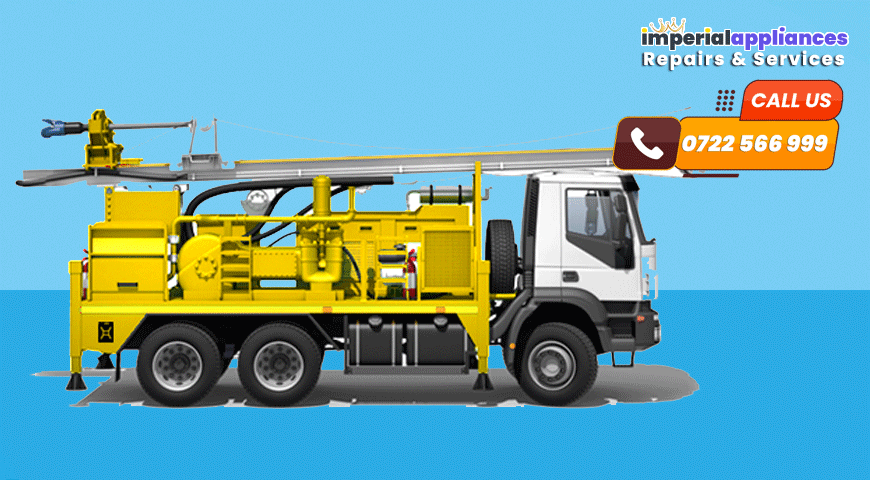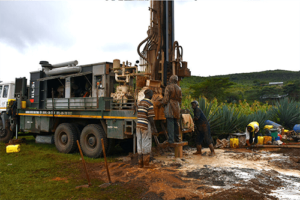
Bestcare Borehole Drilling is a Kenyan Engineering and Borehole Drilling Services Firm that specializes in among others : Borehole Drilling Services in Nairobi and the rest of Kenya, Well Casing services, Borehole drilling location research, Water Tank Construction in Kenya, and Water Tower Construction services.
If you have anything you need to know about borehole drilling, get in touch through our official phone number (0722566999) or by mail for inquiries. You will be able to know about Borehole Drilling prices, Borehole drilling machines, The borehole drilling process, Borehole Drilling price in Kenya, Borehole Drilling Quotation and more.

borehole-drilling-nairobi-kenya
Get to know more about how to borehole drilling services in your Area in Kenya, By getting in touch with us for inquiries and more information.
Furnish us with your borehole drilling services requirements, location of drilling and urgency, and we will revert with very useful information about the process.
We have invested heavily in Borehole drilling equipment, state ofthe art technology, skillset and experience, to deliver the best services to our clients. We drill for homes, schools, churches, communities, non-profit organizations, hotels, lodges and more.
We are a dynamic group that handles all your borehole needs, pump systems and solar systems installation professionally. We aim at delivering high quality services to our clients at affordable market rates. At Raeli Hydro, we have the capacity and expertise needed to satisfy all your drilling requirements.
Over time, we have established an exceptional reputation as a provider of quality services, using state of the art equipment and client-focused business processes. We liase other industry players to stay updated and deliver internationally reputable services that also meet local standards.

borehole-drilling-services-companies-in-kenya
After the contract has been formalized, Our technical team visits the site along with geologists to identify the best place to carry out the drilling process. The drilling rig accompanied by a support truck arrives at the site.
Based on soil and rock formation conditions, we would take approximately 3 hours to prepare for the drilling process. The drilling is carried out using the “Down-The-Hole” (DTH) technology. We use high compressed air built within our drilling rig.
The size of the hole varies, depending on the client’s requirements. Geological rock samples are taken every 2 meters. Struck and water rest levels are constantly recorded. This way we are able to estimate the yield of individual aquifers encountered. Work with Bestcare Borehole Drillingfor your Drilling needs

appliance repair services nairobi kenya
Hydrological Reports, Water Analisys Reports & NEMA Reports
When necessary, BESTCARE BOREHOLE DRILLINGSystems will help you acquire the prerequisite documentation (permits and licenses) for drilling activity.
Once the geologist has surveyed the area, he/she will provide you with a detailed report on the geology of the parcel of land. This report will also indicate the estimated depth of the water and the exact location of the borehole. The report is an important document you will require, to get the drilling process going, besides other important documents.
Both the depth and the diameter of the borehole affects how costly your project is going to be. The deeper you drill the borehole, or the wider you have it, the more expensive your borehole will be. These factors determine the Borehole Drilling price in Kenya, more than most of other determining factors.
Drilling a borehole is a complex and precise operation that allows us to tap into one of Earth’s most precious resources: fresh groundwater. This process is made possible through the utilization of specialized machinery known as drilling rigs. Here’s a glimpse into how a borehole is expertly drilled using a rig:
1. Site Assessment: Before the drilling process begins, a thorough site assessment is conducted. Geologists and hydrologists study the area to identify the best location for the borehole, considering factors such as geology, hydrogeology, and proximity to potential contamination sources.
2. Rig Setup: Once the ideal location is determined, the drilling rig is brought to the site. These rigs come in various sizes and types, depending on the specific geological conditions and the depth required for the borehole.
3. Drilling Commences: The drilling rig is positioned over the chosen location, and the actual drilling begins. A drill bit, attached to the rig, penetrates the Earth’s surface and descends into the ground. The process involves the rotation of the drill bit while applying downward force to break through layers of soil, rock, and sediment.
4. Collecting Samples: As drilling progresses, samples of the material encountered are collected at regular intervals. These samples provide valuable information about the geology and hydrogeology of the area and help guide the drilling process.
5. Adding Casing: To prevent the borehole from collapsing and to protect the groundwater from contamination, casing pipes are inserted into the borehole as drilling advances. These pipes are typically made of materials like PVC or steel.
6. Drilling Continues: The drilling process continues, with the borehole deepening into the Earth’s subsurface. The drilling rig operators closely monitor the progress and adjust drilling parameters as needed to ensure the borehole’s integrity.
7. Reaching the Aquifer: The ultimate goal is to reach the aquifer, a layer of saturated rock or sediment that contains the groundwater. Once the aquifer is reached, drilling slows down to avoid damaging the well screen.
8. Installing Well Screen and Gravel Pack: A well screen is placed at the bottom of the borehole within the aquifer to allow water to flow into the well while filtering out sediment and debris. A gravel pack is added around the screen to further stabilize the well and improve water flow.
9. Development and Testing: After the borehole is drilled, it undergoes development, which involves removing any drilling mud and fine particles from the borehole. Subsequently, the borehole is tested to determine its yield and water quality.
10. Pump Installation: Once the borehole is successfully drilled and tested, a submersible pump is lowered into it to extract groundwater. This pump is connected to a system that transports the water to storage tanks or directly to the point of use.
Drilling a borehole with a rig is a precise and efficient process that requires the expertise of geologists, hydrologists, and skilled drill rig operators. It’s a crucial method for accessing clean and reliable groundwater, serving communities, agriculture, industries, and more, ensuring access to one of Earth’s most vital resources.